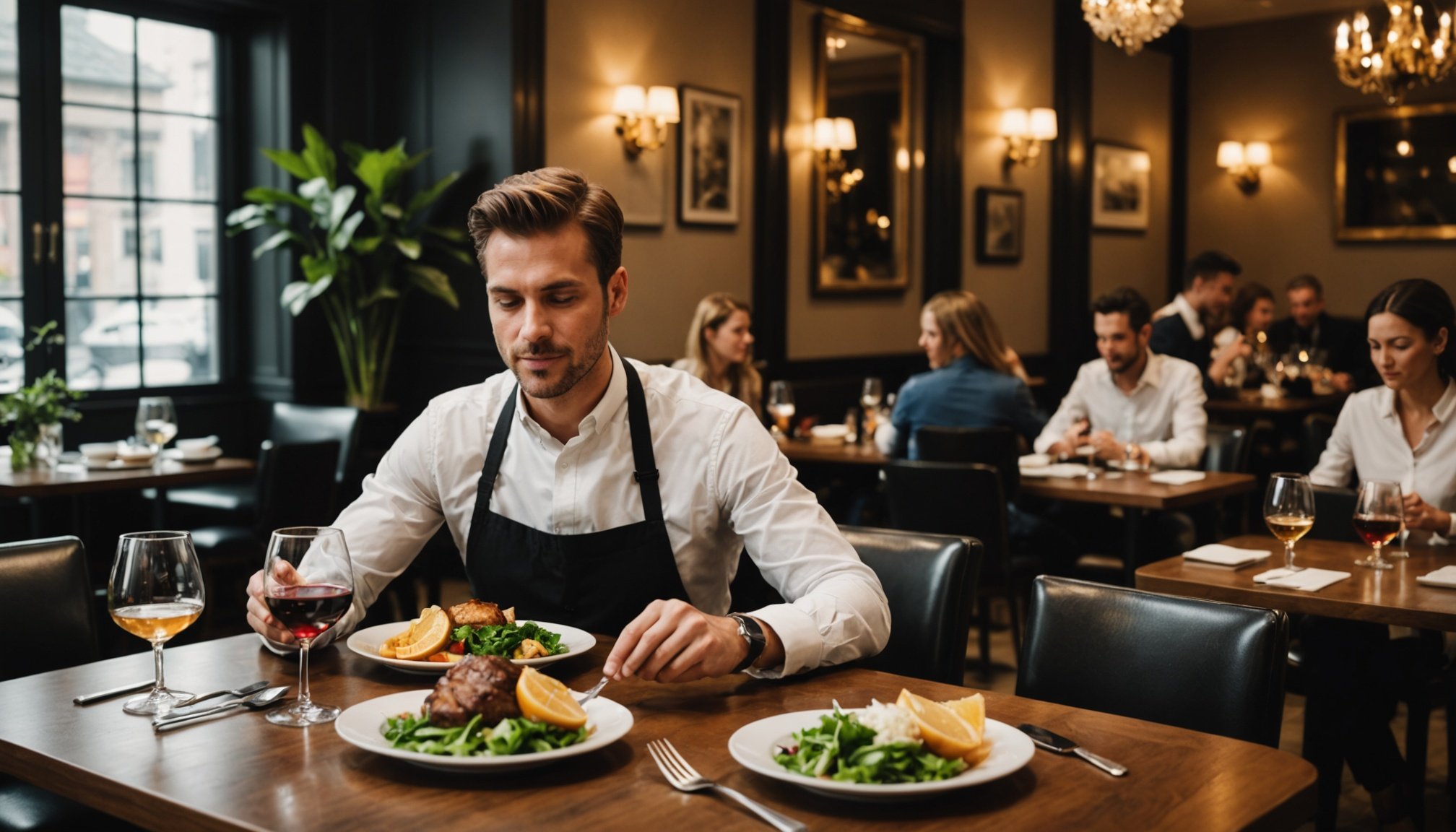Understanding Scent Marketing in Restaurants
Scent marketing plays a crucial role in shaping the restaurant ambiance and enhancing the overall customer experience. At its core, scent marketing involves the strategic use of aromas to influence moods and behaviours. Restaurants around the world have been employing this technique to create a welcoming atmosphere and evoke positive emotions in their patrons.
Scents have a profound impact on our mood and decision-making processes. Research indicates that pleasant aromas can enhance a customer’s perception of the environment, making them more likely to linger and spend more. The link between scent and memory is especially strong, as certain aromas can trigger nostalgic feelings and prompt repeat visits.
Topic to read : Ultimate guide to preserving ice cream freshness: pro tips to avoid freezer burn in your dessert bar
Statistics support the effectiveness of scent marketing, with insights showing that significant portions of customers prefer dining establishments that offer a delightful smell experience. Crafting an ambiance with aromas that evoke comfort and happiness can thus directly contribute to a restaurant’s success by boosting loyalty and customer satisfaction. In summary, employing the right scents is not just an afterthought but an essential component for enhancing customer engagement and experience in a dining setting.
Benefits of Scent Marketing for Restaurants
Implementing scent marketing comes with numerous benefits for restaurants, particularly in achieving customer retention. Delightful aromas encourage repeat visits, subtly influencing patrons to return for the overall pleasing experience. A well-chosen scent can linger in a customer’s memory, coaxing them back like a culinary siren call.
Additional reading : Ultimate guide to keeping your craft brewery”s draft beer lines immaculate: pro tips for spotless maintenance
Moreover, scent marketing enhances the dining atmosphere significantly. It sets the tone and complements the restaurant’s existing aesthetic, crafting an environment that feels cohesive and inviting. Whether the goal is to evoke nostalgia or project freshness, scents play a crucial role in achieving the desired ambiance.
Insights into the psychological effects of aromas reveal their ability to amplify the pleasure associated with food and drink. Certain fragrances can stimulate appetite or enhance the perceived flavor of dishes, adding an olfactory layer to the gastronomic experience. Additionally, they can trigger positive memories linked to past dining moments, reinforcing the restaurant’s appeal.
In summary, when implemented thoughtfully, scent benefits manifest through a richer atmosphere and bolstered customer loyalty, thereby contributing to a restaurant’s sustained success. Understanding and harnessing these advantages are essential steps toward creating an unforgettable dining journey.
Strategies for Implementing Scent Marketing
Incorporating scent marketing strategies effectively can transform your restaurant’s atmosphere. Start by choosing the right scents, considering factors like cuisine style and desired ambiance. Popular choices include citrus for freshness or vanilla for warmth. Tailoring scents to fit your restaurant’s unique theme ensures a coherent sensory experience.
When integrating scents into the dining experience, balance is key. Use techniques that enhance but don’t overpower the food aromas. Consider using subtle diffusers or candles to maintain a pleasant level of fragrance. Adjust the timing and intensity of scent exposure; for instance, lighter scents might suit lunch, while richer aromas could enhance a dinner setting.
Strategically place scents in entryways, bathrooms, and dining areas to create a cohesive environment. This approach sets the tone as guests enter and can enhance their overall satisfaction. By thoughtfully implementing these scent marketing strategies, you ensure that your restaurant stands out as a sensory delight, inviting more patrons to enjoy the unique atmosphere.
Case Studies: Successful Scent Marketing Examples
Examining scent marketing case studies offers valuable insights into implementing a successful strategy. Restaurants that have effectively used aroma to enhance the dining experience serve as inspirational success stories, showcasing the potential impact on customer satisfaction and loyalty.
One notable example is a high-end steakhouse that carefully selected a woody aroma to complement their rustic decor. This deliberate scent choice created a warm, inviting atmosphere that resonated well with its clientele, significantly increasing customer visits and glowing reviews. Another instance includes an Italian bistro that infused their space with herbaceous scents reminiscent of Italian countryside, triggering a sense of authenticity and nostalgia among their patrons, thus boosting repeat visits.
Analyzing these approaches reveals a key lesson: the alignment of scent with the restaurant’s theme and branding fosters a cohesive dining experience. By meticulously crafting scents that mirror their culinary story, these establishments enhance overall customer engagement. These examples underline the importance of mindful aroma selection and suggest that thoughtful integration of scent marketing can substantially uplift a restaurant’s ambiance.
Balancing Aroma with Food
Achieving a cohesive sensory experience in restaurants is an art form that requires careful aroma balance. The integration of food scents with additional fragrances must be subtle and harmonious. This ensures that the food remains the primary sensory highlight while the added scents enhance the overall atmosphere.
Consideration of dining times is crucial. For lunch, a lighter, fresher scent may complement the typically lighter dishes served, whereas dinner settings often warrant richer, deeper aromas that align with more robust evening meals.
Techniques such as timing the release of scents, using diffusers in specific areas, and adjusting the fragrance intensity help harmonize scents with food. The importance here lies in creating an inviting environment without overshadowing the restaurant’s culinary creations.
Moreover, the synergy of food scent integration and ambient aromas plays a pivotal role in enhancing the dining experience. Properly balanced scents can make dining more enjoyable, leading patrons to fondly remember their experience and encouraging further visits. Such balance ensures that diners are both comforted by familiar food smells and intrigued by the sophisticated ambient scents.
Compliance and Customer Feedback in Scent Marketing
When implementing scent marketing, it is crucial to adhere to existing regulations and standards. Compliance ensures that the scent choices align with health and safety guidelines, avoiding any adverse effects on customers. Regulatory considerations often pertain to scent intensity and the selection of non-allergenic fragrances to prevent discomfort.
Incorporating customer feedback is essential for the continuous enhancement of your scent strategy. Gathering feedback can be achieved through surveys, comment cards, or direct conversations, providing insights into how the scents influence customer satisfaction and perception. Analysing this feedback allows for strategic adjustments to the scent profile, ensuring it aligns with patrons’ preferences.
Customer feedback serves as a vital tool for evaluation, providing a window into diners’ experiences with the scent marketing approach. By understanding their responses, restaurants can fine-tune their olfactory branding to enhance the dining atmosphere effectively.
Adapting scent strategies based on feedback helps maintain a welcoming ambiance and reinforces positive dining experiences. It empowers restaurants to curate a scent environment that resonates with guests, fostering both loyalty and a memorable atmosphere.











